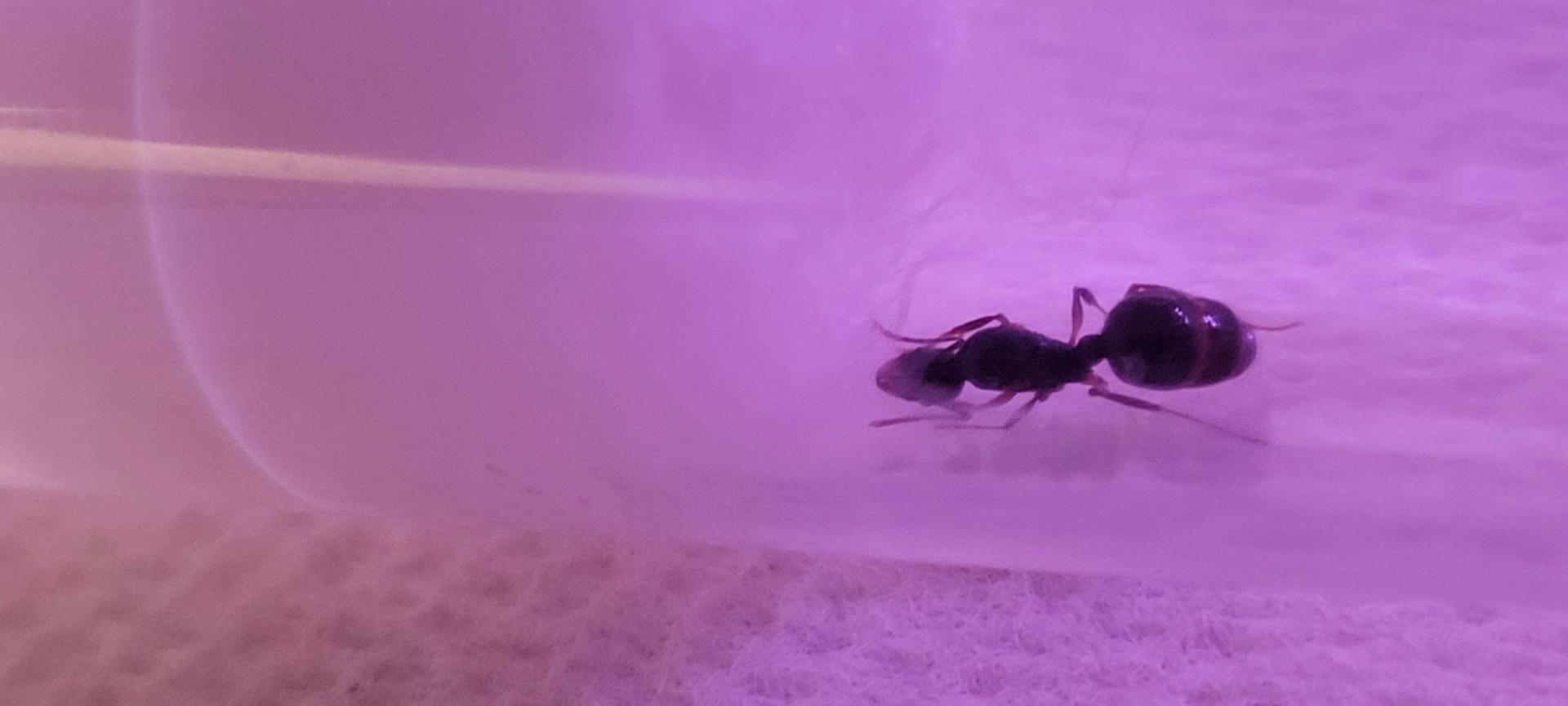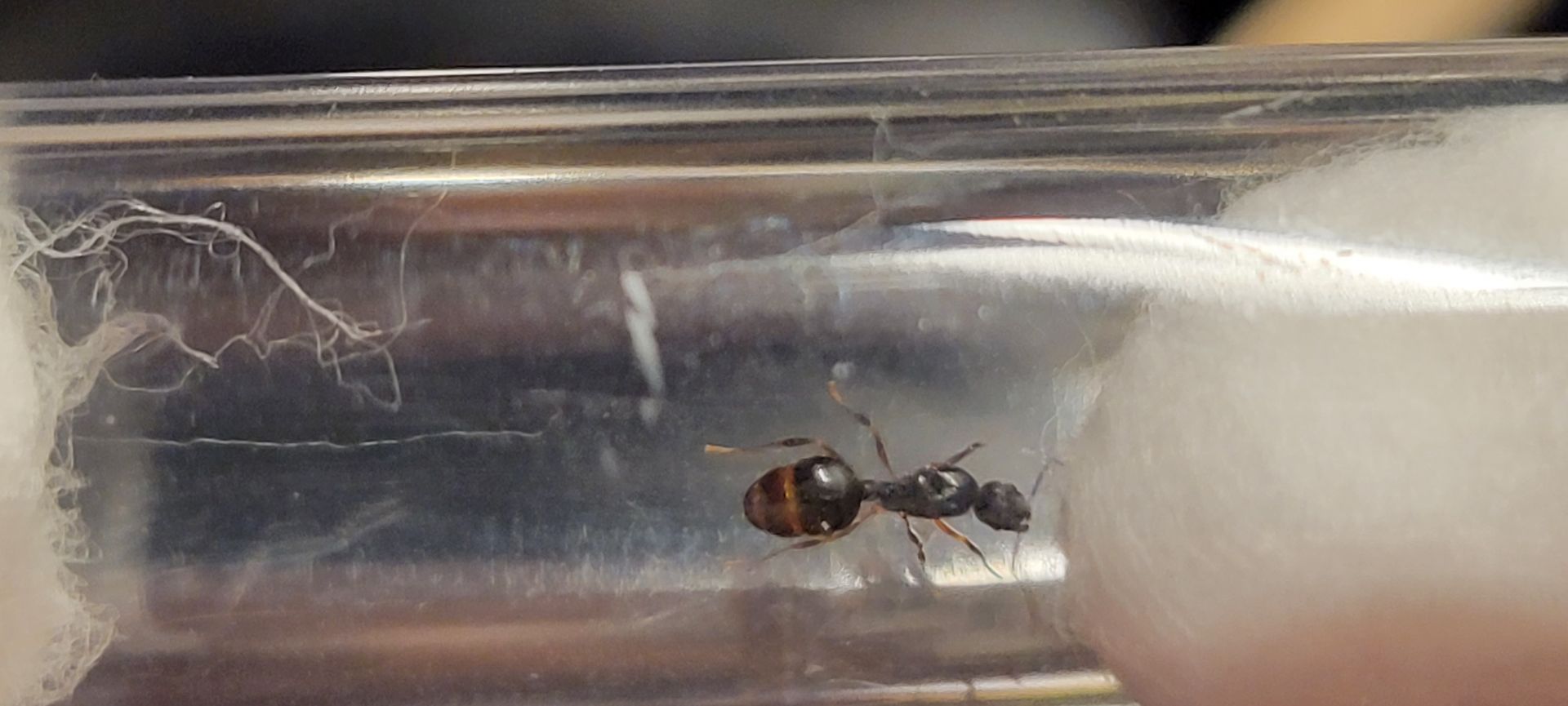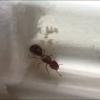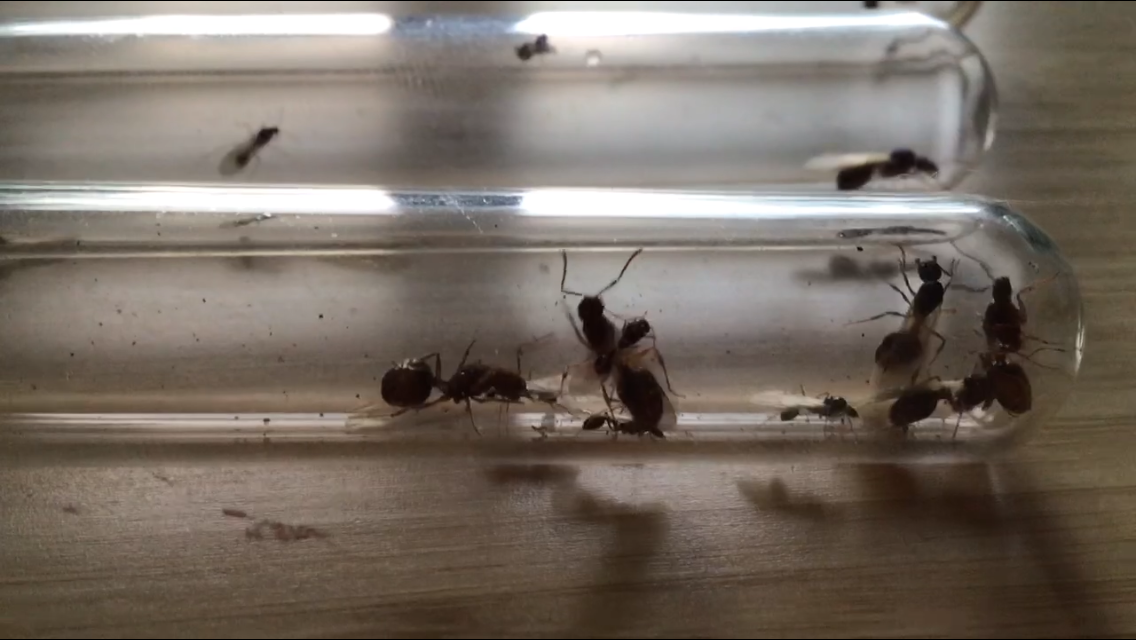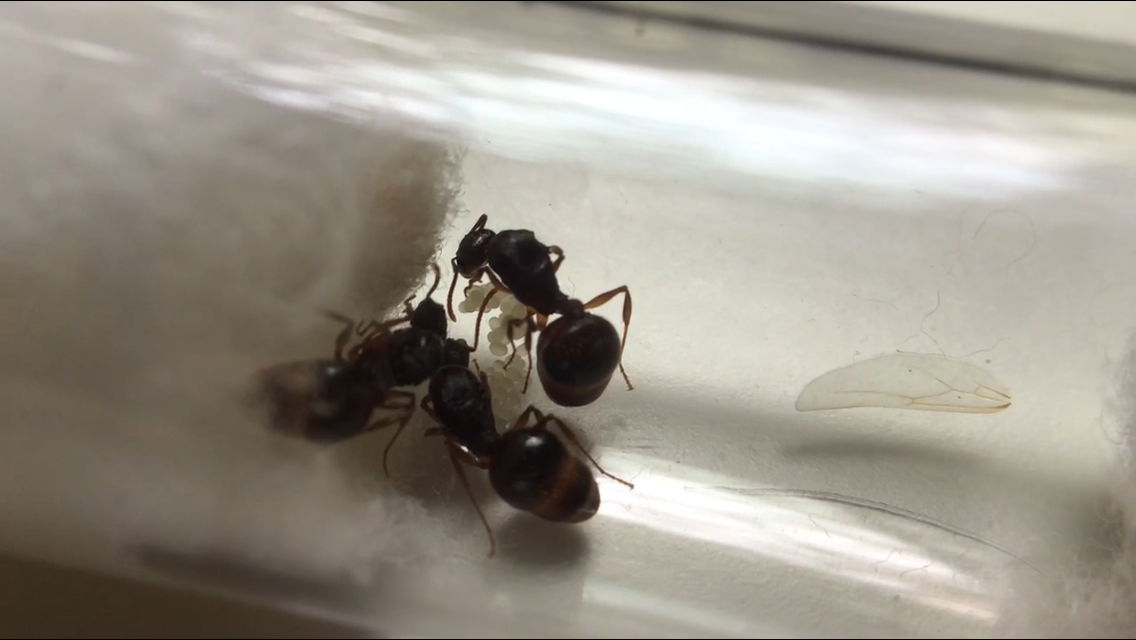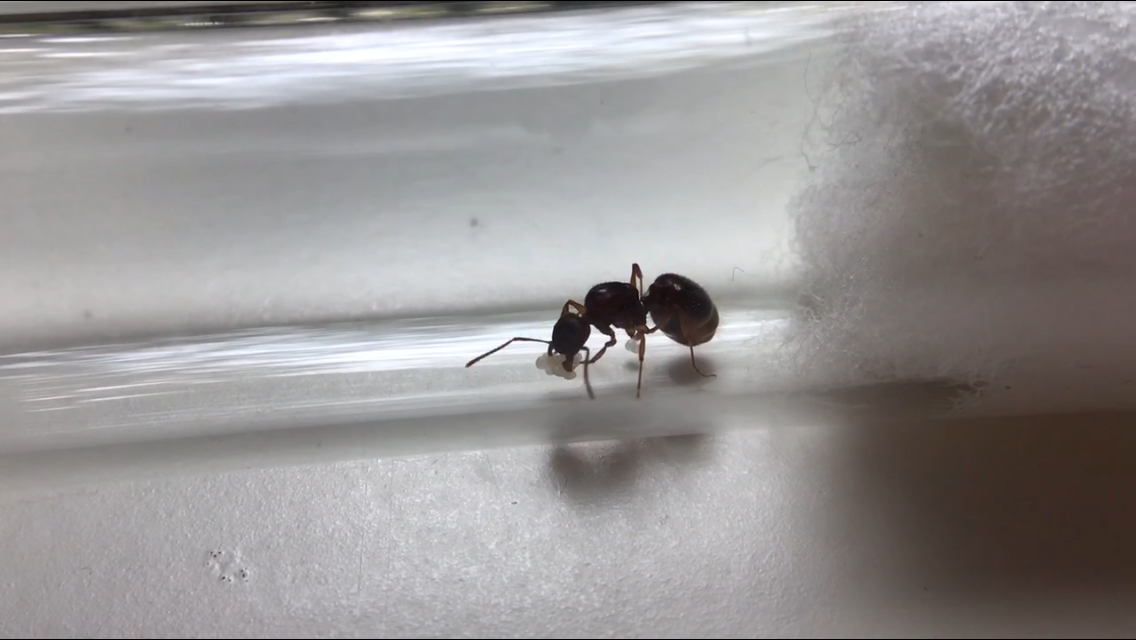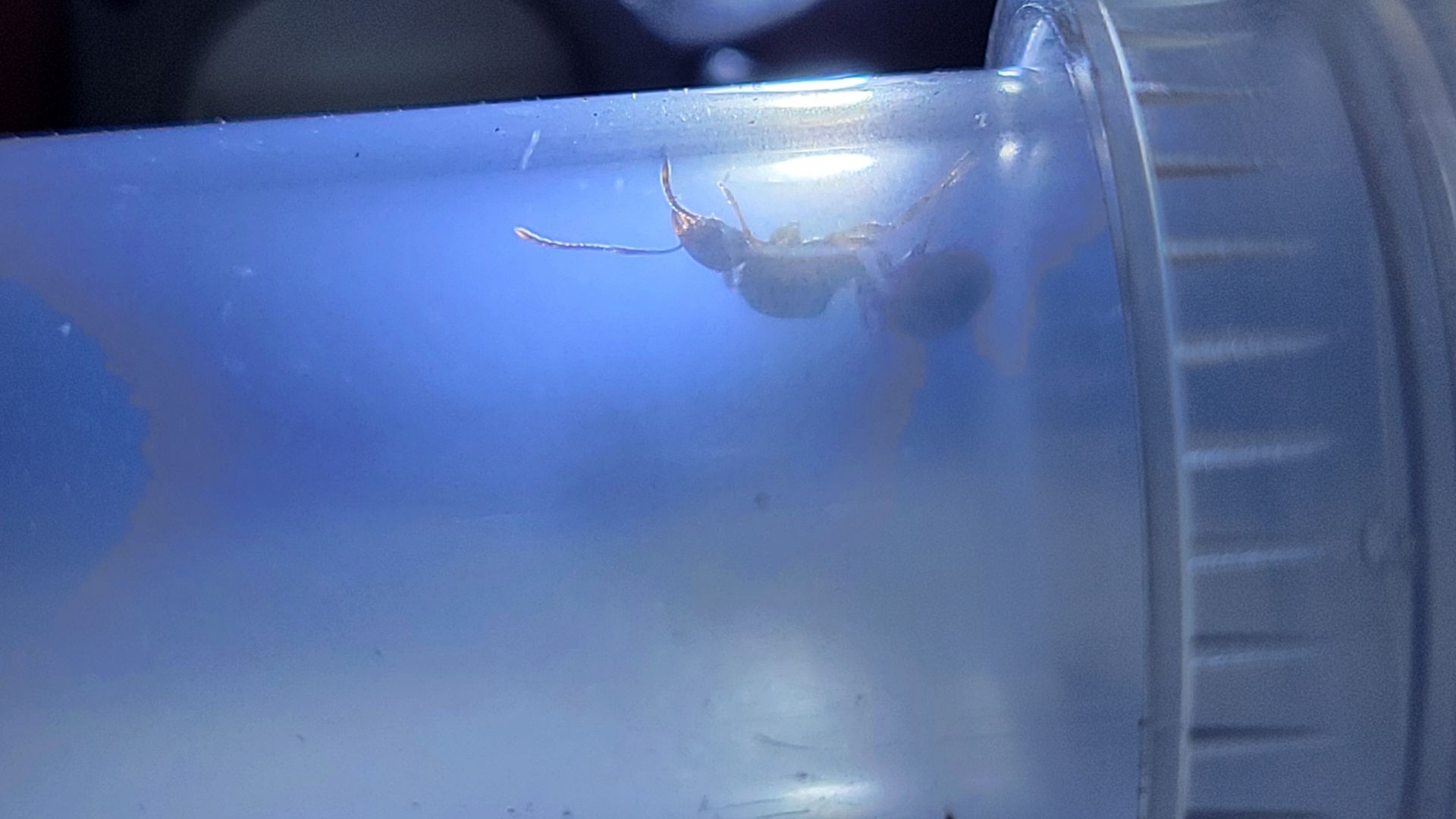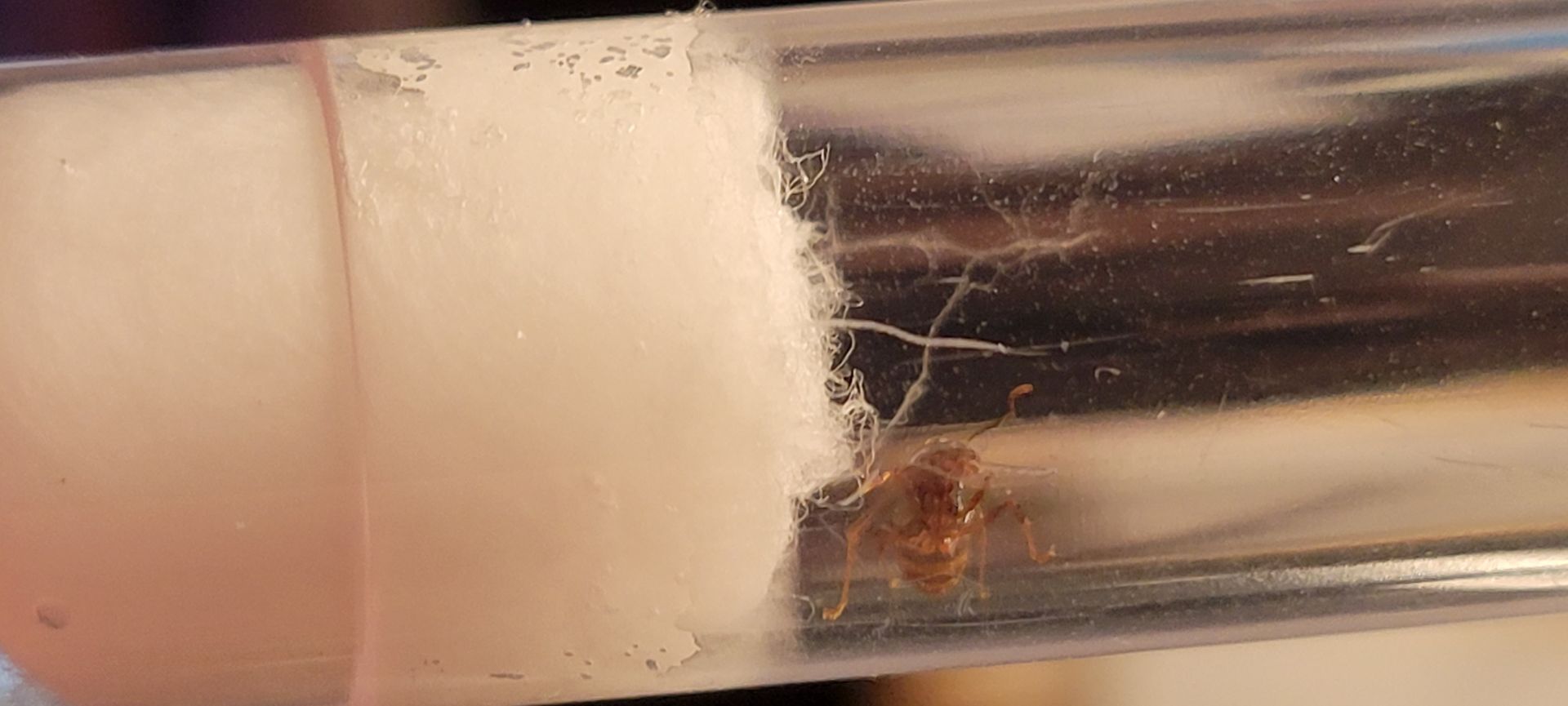This little lady just walked right up to me in my attic apartment about an hour ago. Getting pictures of her was hilarious, she really had the zoomies until I managed to smear a little Sunburst in there and keep her still enough for the last shot. It was at least comforting to know she hadn't been hurt after having to be flicked into the tube to save her from my cat's interference hah.
To my first-year totally amateur eyes, this seems like a classic Aphaeongaster, no? Given the details below, I have to assume Picea?
Location: Catskills/Hudson region NY
Size: Hard to measure Ms. Zoomies but looks around 8-11mm. A little bigger than my tetramorium queens.
Notable: Those petioles, and then in one of the pics you can clearly see whatever you call the spiky bits on the end of her thorax? Both seem to match with Picea pictures, plus the body carriage seems pretty distinct even to a noob like me.
So, if she is as expected, do you think she'd be happiest in just a basic tube setup (eventually to be connected to AC tube portal for young feeding until formicarium?) or the spare Por Amor apartment I have? Care sheets mention a strong preference for humid/dry zones in the nest, and the Apartment has a grouted inner chamber (high humidity) and a non-grouted outer chamber that can be used to extend the nest that's dryer, so I wondered.
Thanks for your help!
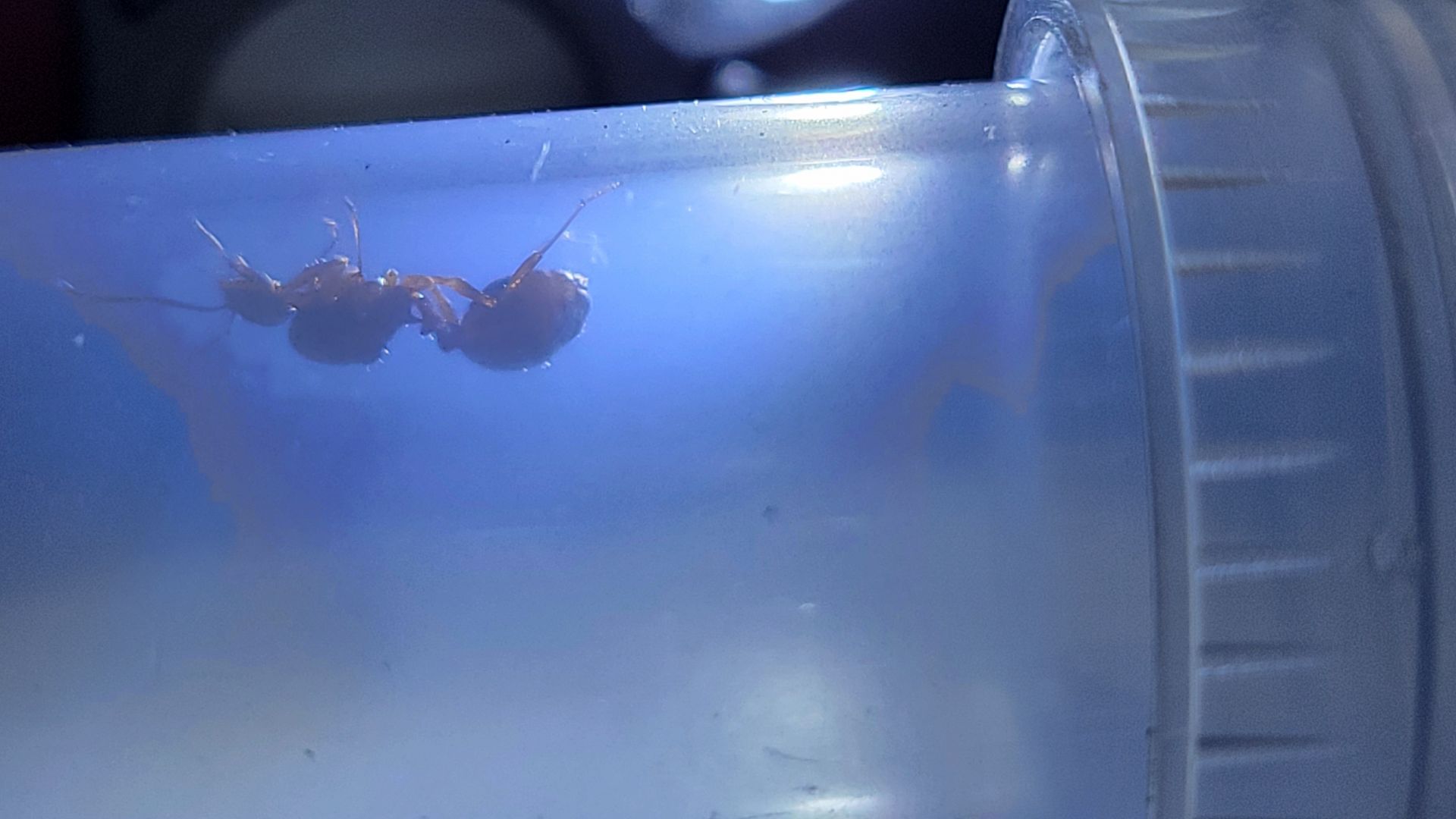
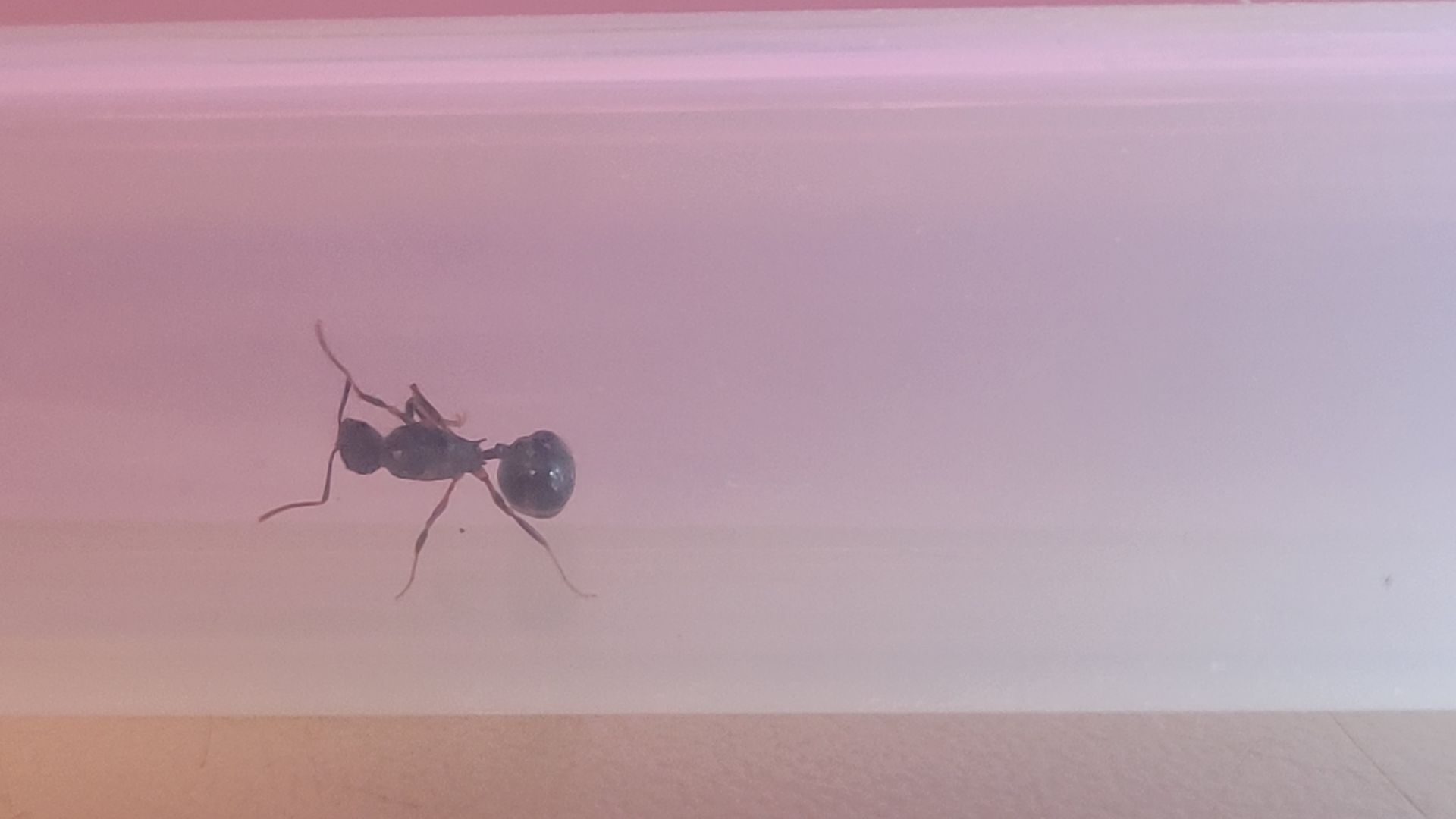
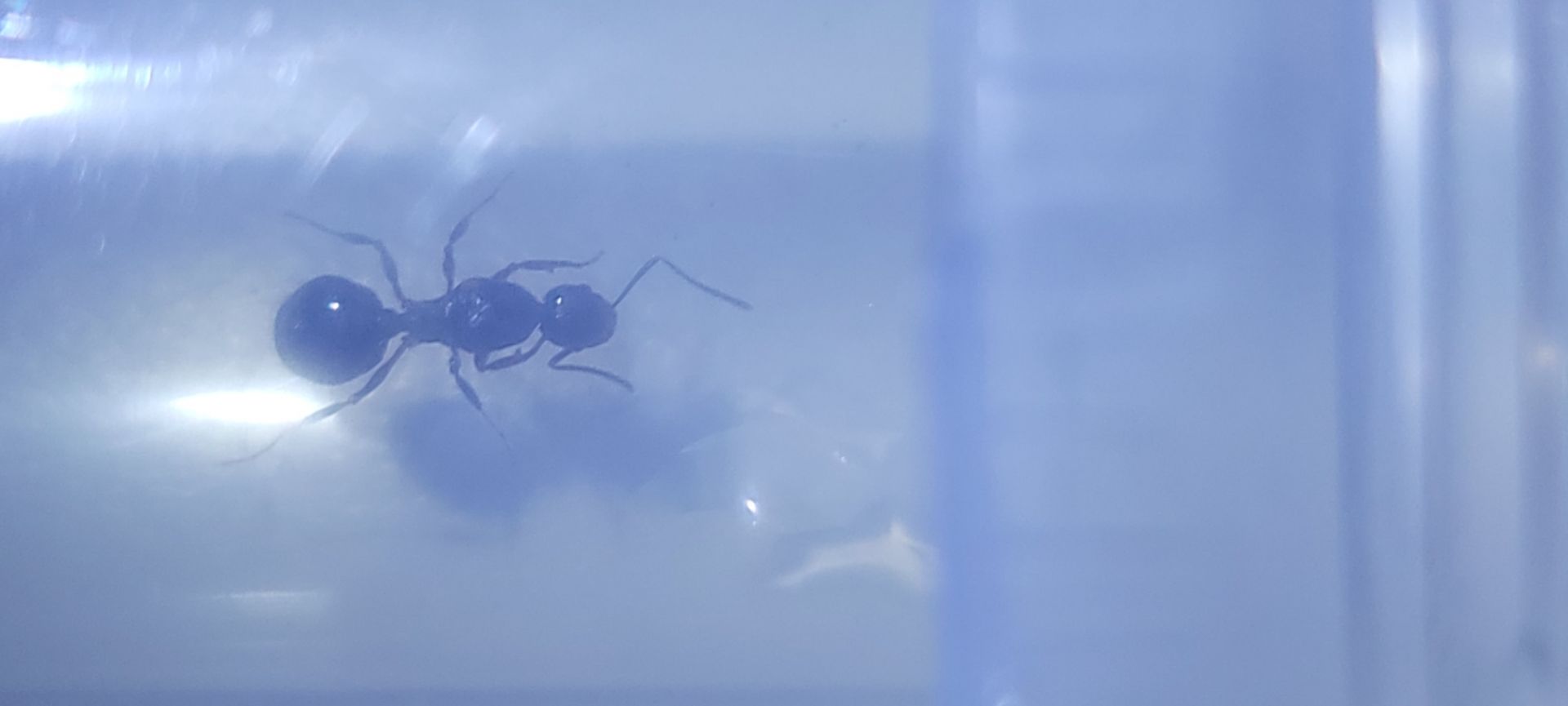
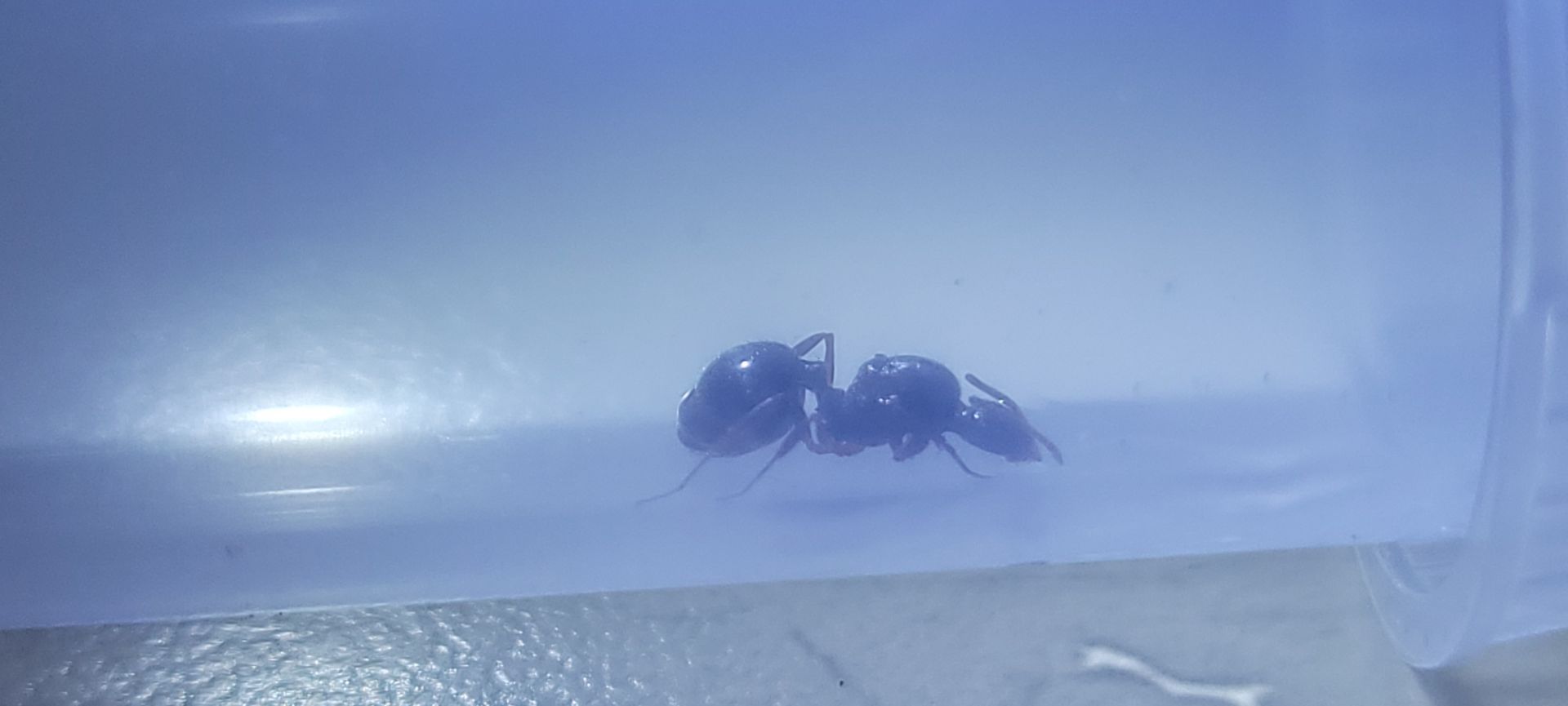
Edited by m99, August 10 2021 - 11:57 AM.








